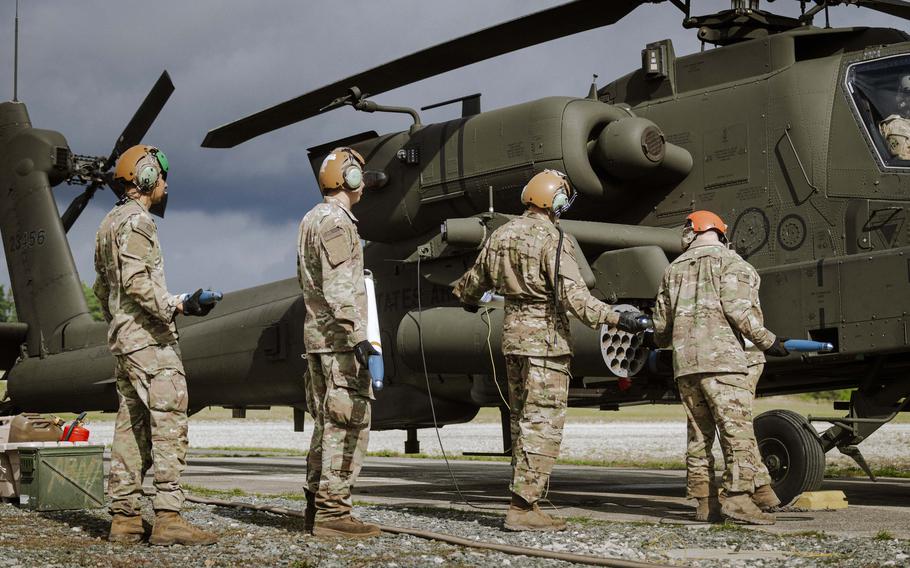
Soldiers with the 12th Combat Aviation Brigade load rockets into an Apache helicopter at Grafenwoehr Training Area on Sept. 24, 2024. (Lydia Gordon/Stars and Stripes)
GRAFENWOEHR, Germany — The Army has begun revamping outdated aircraft fueling and rearming procedures to make the process quicker and safer for service members in combat zones.
The Helicopter Expedited Refueling Operations project, or HERO, will introduce faster pump systems, robotic fueling and elements of artificial intelligence, an Army statement said.
A team from the Army Applications Laboratory, which is running the project, recently observed a 12th Combat Aviation Brigade exercise at the Joint Multinational Readiness Center in Hohenfels, Germany, to better inform their work.
Forward Arming and Refueling Point protocols have remained unchanged for decades, even as the pace of combat has increased.
In the best-case scenario, the site takes 40 to 60 minutes to stage and equip. It takes another hour to arm and fuel the aircraft and more time to pack up and move out, said Capt. Justin Thomas, distribution platoon leader for Echo Company, 1st Battalion, 3rd Aviation Regiment.
“Overall, you’re looking at a three-hour time of exposure for both the soldiers on the ground and the aircraft,” Thomas said Tuesday.
The revamp would include unmanned ground support systems, said Sgt. 1st Class Dayne Martin, Echo Company’s distribution platoon sergeant.
“I think it’s going to really streamline all the processes … and really minimize that time on station for the personnel,” said Martin, who added that the ultimate goal is to minimize the enemy threat to the soldiers and aircraft.
The pumps and robotics are in development, said Capt. Lydia LaRue, a 12th Combat Aviation Brigade spokeswoman.
The HERO project is in its early stages. The Army’s goal is to have technology prototypes sent to soldiers in less than 30 months, LaRue said.